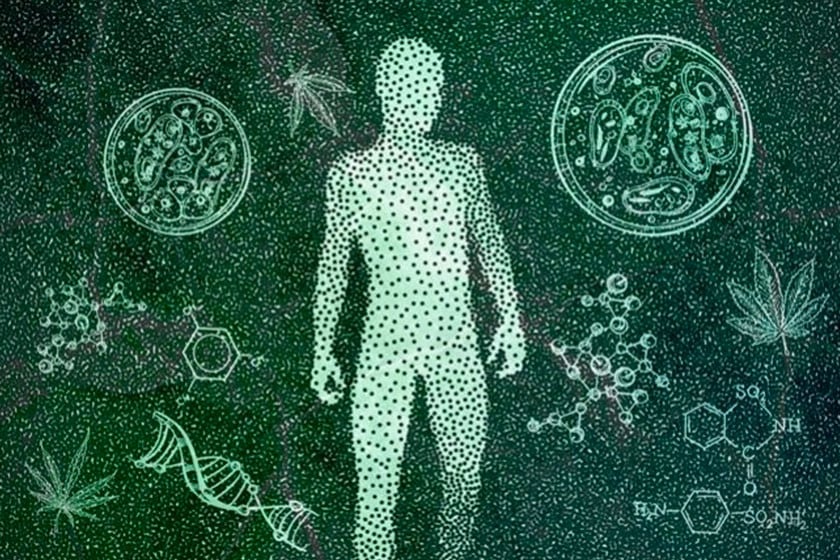.

Is GPR55 the Third Cannabinoid Receptor?
The endocannabinoid system helps to keep the human body in balance. Since its discovery, researchers have slowly unveiled how it regulates neurotransmitters and underpins the psychotropic effects of cannabis. Scientists are constantly breaking new ground in this area, and some are now proposing the existence of a third cannabinoid receptor—CB3.
Contents:
At Royal Queen Seeds, we’ve taken you through the ins and outs of the endocannabinoid system (ECS). Now, we’re about to dive a little deeper. Join us as we explore new structures that are currently vying for the title of the third cannabinoid receptor—CB3. The ECS governs all manner of processes in the human body, so a potential new addition to this all-encompassing network is a pretty big deal!
The cannabis plant contains hundreds of interesting molecules that, when ingested, create unique biochemical changes in the body. Specifically, numerous members from the cannabinoid and terpene classes bind to receptors of the ECS. As this system mediates many facets of human physiology, ongoing studies are exploring if and how these ECS ligands (chemicals that bind to specific receptors) might work to treat certain conditions.
Additionally, researchers are continuing to study the ECS for additional components hitherto unknown or unclassified. Such findings include the identification of new binding sites for cannabis constituents that might play important roles in the future of medical cannabis.
Below, find out more about the ECS, and meet the main candidates for "CB3", including the intriguing but underrepresented GPR55. As cannabis science continues to move forward at a rapid pace, it pays dividends to keep up to date on these important findings.
A Primer on the Endocannabinoid System
To better understand why the idea of CB3 holds such importance, and how GPR55 is a worthy candidate, we must first cover some of the foundations of the ECS.
The ECS plays a host of vital roles in human physiology. Ultimately, it helps to regulate almost every other system in the body by encouraging a state of balance, otherwise known as homeostasis. But how exactly does it achieve this?
It comes down to a complex dance between different components; namely, receptors, signalling molecules, and enzymes.
Cannabinoid Receptors
The “classical” ECS encompasses two types of cannabinoid receptors: cannabinoid type 1 (CB1) and cannabinoid type 2 (CB2). These receptor types are found in many regions of the body, from neurons and immune cells to skin and bone cells. Positioned on the surface of the plasma membrane of cells, these receptors await activation from ECS signalling molecules.
Both CB1 and CB2 belong to a group of receptors called G protein-coupled receptors (GPCRs). When a molecule binds to them, they cause changes to a “G protein” situated on the other side of the plasma membrane. This shift starts a biochemical cascade that catayses the necessary changes within the cell.
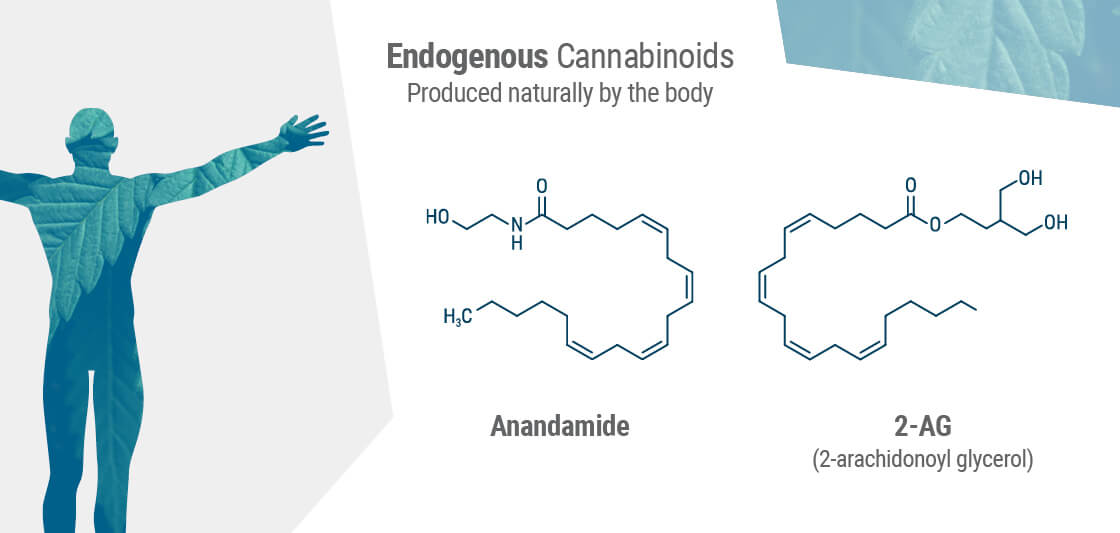
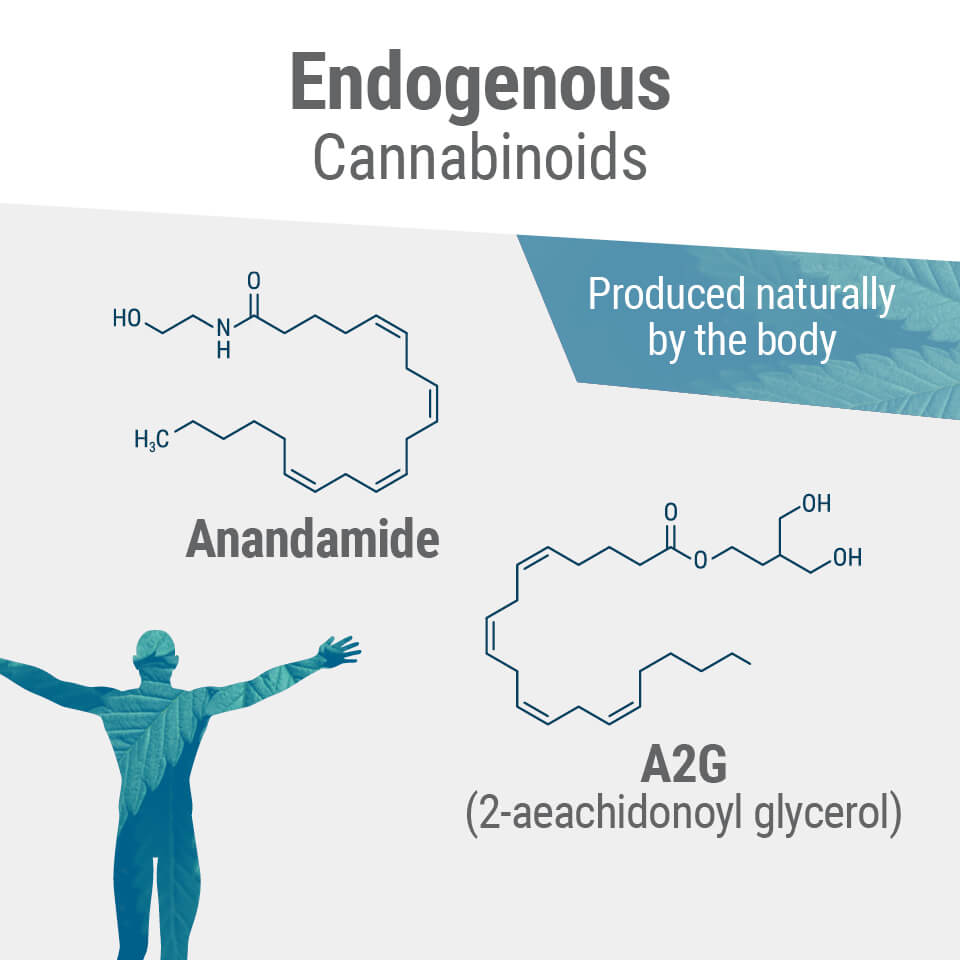
Signalling Molecules — Endocannabinoids
The signalling molecules of the ECS are referred to as endocannabinoids; “endo” meaning “within”. Cells manufacture these chemicals on demand and release them to bind to the cannabinoid receptors of other cells. For example, post-synaptic neurons make endocannabinoids and send them backwards (retrograde) across the synaptic cleft to control incoming neurotransmitter traffic.
There are two endocannabinoids that belong to the classical ECS: anandamide (AEA) and 2-arachidonoylglycerol (2-AG). Upon binding to CB1 and CB2 receptors on the surface of cells, these molecules cause internal changes that help to bring our systems back into balance.
Interestingly, endocannabinoids share a similar structure and function to cannabinoids found in the cannabis plant (phytocannabinoids). As such, molecules such as THC are able to bind to our cannabinoid receptors and facilitate cellular changes. Given some researchers view the ECS as a “therapeutic target”, cannabinoids have been subject to increased study for their potential to modulate this vital physiological system.
Enzymes
Finally, the third group of components that make up the ECS are enzymes. These proteins manufacture endocannabinoids from other molecules when the body needs them; a process known as synthesis. They also quickly break them down when they have served their purpose; a process known as degradation.
Understanding the Endocannabinoidome
Recent discoveries have led researchers to identify additional components of the ECS. Known as the “expanded endocannabinoid system” or “endocannabinoidome”, it includes an array of ligands, 20 metabolic enzymes, and over 20 receptors[1]. This massive addition to the network includes components involved in a host of processes, from pain signalling to gene expression and fat burning. These findings open up the doorway to the many other mechanisms by which cannabinoids might act in the body.
GPR55: The Third Cannabinoid Receptor?
We know that CB1 and CB2 belong to the G protein-coupled receptor class, but cannabinoids bind to other members of this large family as well, including G protein-coupled receptor 55, remembered more simply as “GPR55”. Researchers formerly referred to this site as an “orphan receptor”, as its endogenous ligands remained unknown. However, various ECS ligands are now known to bind to the site, including anandamide[2].
Researchers first isolated and cloned[3] GPR55 in 1999. It appears the receptor shows up in many places within the body. In the central nervous system, high levels of expression are found in the hippocampus (a region of the brain involved in memory and learning) and cerebellum. The receptor also exists in peripheral sites, including cells in the spleen, GI tract, and adrenal glands. Studies have also found high levels of GPR55 expression on certain cancer cells.
Interestingly, GPR55 has a “low homology”—a different genetic structure—to CB1 and CB2. It shares only 13.5% of the same amino acids (the building blocks of proteins) with CB1, and 14.4% with CB2. Despite this genetic difference, some researchers have landed on the conclusion that GPR55 deserves the title of CB3.
Certain studies use a "knock-out mouse" model to determine the effects of cannabinoids. Essentially, without the genetics that code for these proteins, the mice simply don’t possess CB1 and CB2 receptors. However, given that cannabinoids sometimes still produce effects in these mice, it leads researchers to hunt down other receptor sites where any changes occur.
A study published in the British Journal of Pharmacology tested a range of plant-derived and synthetic cannabinoids[4] on GPR55. The findings indicate that anandamide, 2-AG, CBD, and other molecules successfully bind to GPR55.
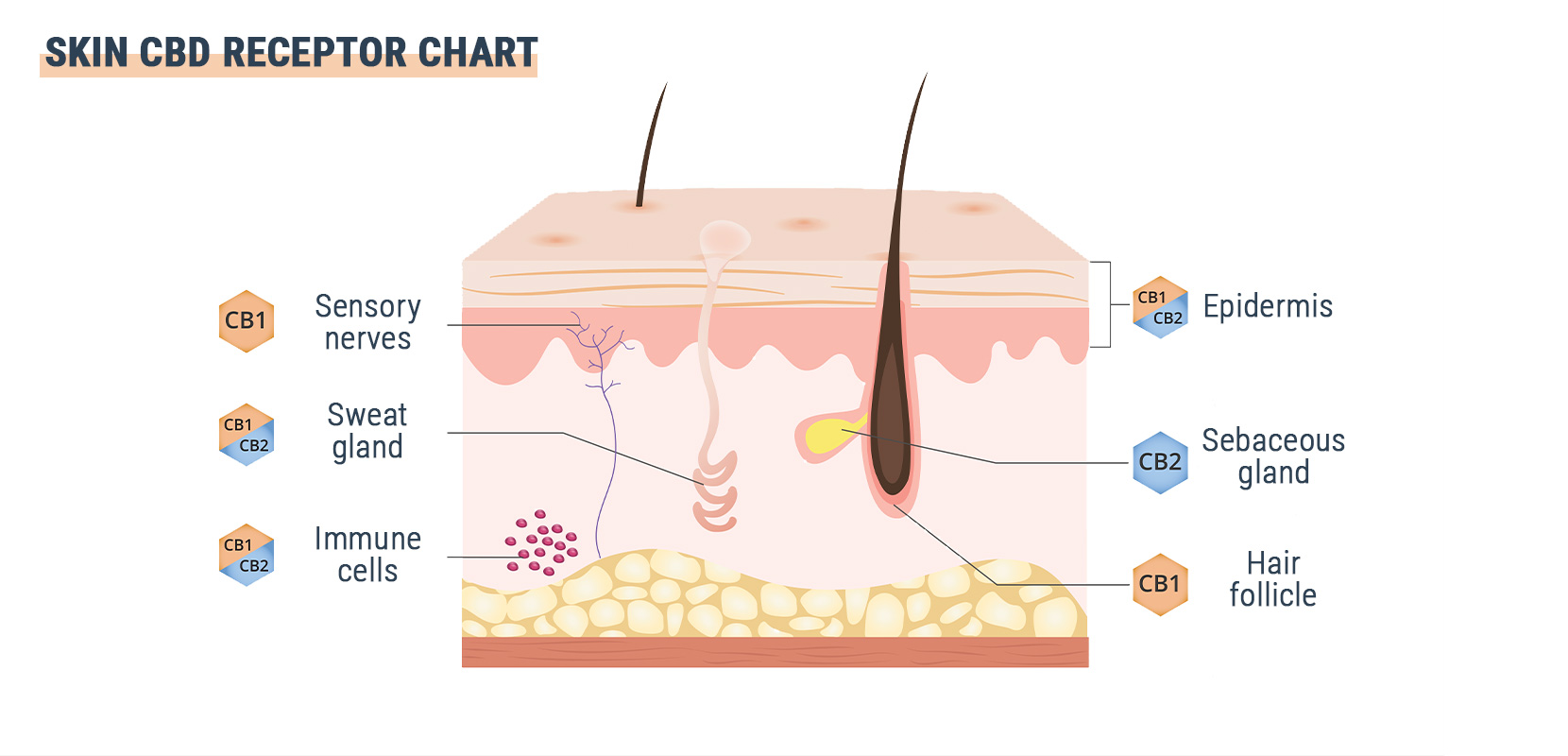
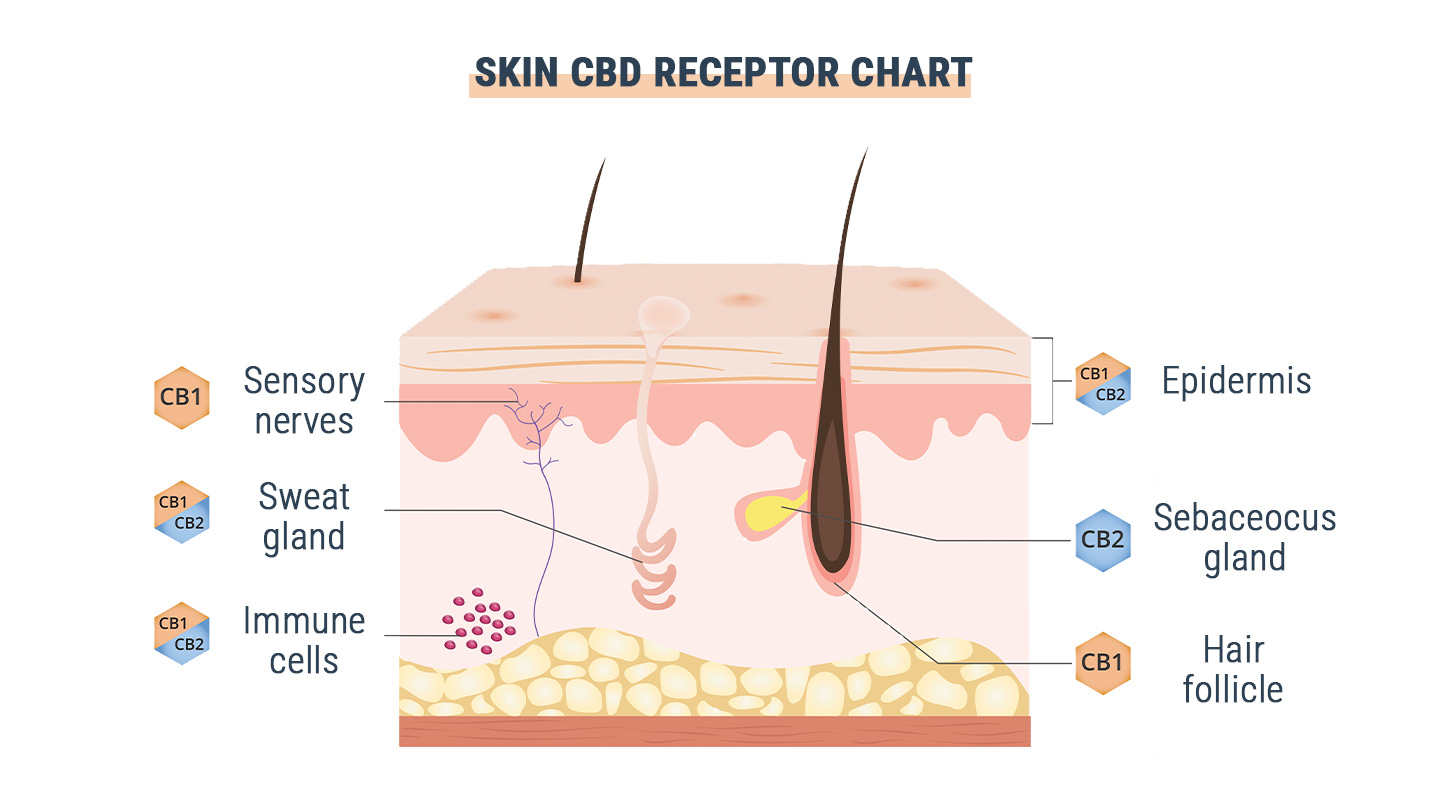
GPR55 and CBD
But what does this mean for cannabis users? How will these findings change the way we utilise cannabis? Discovering how cannabinoids work in the body helps researchers understand their potential applications in medicine. For example, ongoing studies are exploring the role of GPR55 when it comes to CBD and epilepsy.
The FDA has approved the CBD-containing drug Epidiolex for severe forms of epilepsy. In fact, CBD first entered the spotlight thanks to famous anecdotes regarding children suffering from epileptic seizures.
But just because CBD binds to GPR55 doesn’t mean that it “activates” the receptor. In fact, it plays the role of an antagonist, meaning it inhibits the action of other molecules that activate the site. The effectiveness of CBD may stem from its ability to temporarily block chemicals that increase the excitability of neurons from binding to the GPR55 receptor[5].
Researchers from the University of Lodz in Poland have also suggested that GPR55 receptors could serve as a therapeutic target[6] for irritable bowel disease (IBD), a condition associated with symptoms of fatigue, weight loss, persistent diarrhoea, and abdominal pain. Studies are continuing to determine if blocking the receptor, through the use of antagonists, could help to manage the symptoms of the condition—making CBD a potential candidate.
Additional G Protein-Coupled Receptors
Other members of the G protein-coupled receptor family are included within the broad system of the endocannabinoidome. Let’s take a deeper look at two of them, and see why they might also join the pantheon of cannabinoid receptors in the future.
- GPR18
The G protein-coupled receptor 18 (GPR18), also known as the N-arachidonoyl glycine (NAGly receptor), is another cannabinoid receptor candidate. Both THC and anandamide bind to GPR18 with high affinity, while CBD only binds with low affinity. This means the receptor shares some characteristics with the CB1 receptor. Because of this, some researchers state that GPR18 should be considered a cannabinoid receptor[7], making it another candidate for the CB3 title.
GPR18 occurs at the highest levels in testicle and spleen tissues, and also shows up in the thymus, small intestine, and white blood cells. Currently, researchers are exploring the role of the receptor in blood pressure control[8] and the regulation of intraocular pressure[9].
- GPR119
GPR119 is another novel cannabinoid receptor that may play a future role in the management of diabetes. The receptor is primarily expressed in the gastrointestinal tract and beta cells of the pancreas in humans[10]. Currently, only a couple of endocannabinoidome molecules are known to bind to this receptor. Researchers are still exploring which phytocannabinoids modulate GPR119, and its role in regulating weight gain and insulin secretion.


The CB3 Receptor: An Evolving Topic
Although researchers discovered the first traces of the ECS in the 1960s, they remain at the very early stages of this journey. They’re currently still mapping it all out, debating the appropriate titles, and finding out exactly how molecules from the cannabis plant impact different receptors. It’s also important to recognize that GPR55 and its related receptors aren’t the only candidates for the CB3 title.
Some scientists claim that TRPV1 (a receptor that detects heat and pain) should receive this honour, as both CBD and anandamide bind to the site[11].
Another group of receptors, known as peroxisome proliferator-activated receptors (PPARs), are also suitable candidates for this position. These sites are located in the nucleus of cells and are involved in gene expression and fat metabolism. An array of cannabinoids interact with these receptors[12], including THC, CBD, THCV, and CBG.
But these sites are just the tip of the iceberg. Future research will likely uncover many other receptors that end up becoming members of an ECS much more extensive than the one we know today. These inevitable changes are simply how science works.
Fields of study are constantly upended by new findings, and what we think we know for certain today may prove shaky tomorrow. At RQS, we’ve made it our mission to stay up to date on this fascinating topic, and you can rely on us to keep you informed about these important changes as they develop.
- The Expanded Endocannabinoid System/Endocannabinoidome as a Potential Target for Treating Diabetes Mellitus | SpringerLink https://link.springer.com
- The orphan receptor GPR55 is a novel cannabinoid receptor https://www.ncbi.nlm.nih.gov
- GPR55 – a putative “type 3” cannabinoid receptor in inflammation https://www.degruyter.com
- The orphan receptor GPR55 is a novel cannabinoid receptor https://bpspubs.onlinelibrary.wiley.com
- A role of GPR55 in the antiepileptic properties of cannabidiol (CBD) (P2.277) | Neurology https://n.neurology.org
- G protein-coupled receptor 55 (GPR55) expresses differently in patients with Crohn's disease and ulcerative colitis - PubMed https://pubmed.ncbi.nlm.nih.gov
- So what do we call GPR18 now? https://www.ncbi.nlm.nih.gov
- The novel endocannabinoid receptor GPR18 is expressed in the rostral ventrolateral medulla and exerts tonic restraining influence on blood pressure - PubMed https://pubmed.ncbi.nlm.nih.gov
- A GPR18-based signalling system regulates IOP in murine eye - PubMed https://pubmed.ncbi.nlm.nih.gov
- GPR119, a novel G protein-coupled receptor target for the treatment of type 2 diabetes and obesity https://www.ncbi.nlm.nih.gov
- Endocannabinoid System Components: Overview and Tissue Distribution - PubMed https://pubmed.ncbi.nlm.nih.gov
- An update on PPAR activation by cannabinoids https://www.ncbi.nlm.nih.gov



























